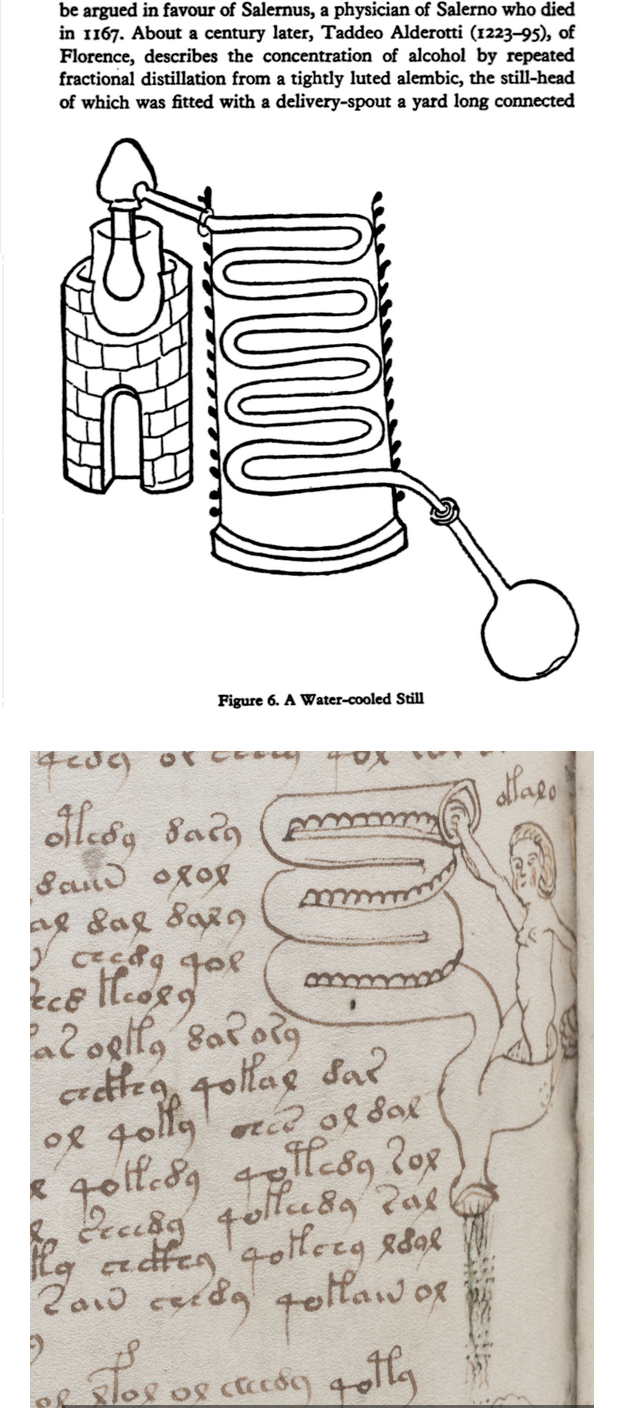Since some time I suspect that the nymphs in the VMS ( Quire 13 ) depict alchemical processes. It is about the processing of substances with appropriate devices. To describe what is meant, here is an image excerpt from Folio f77v in which in my opinion a water-cooled still is shown.
Already Taddeo Alderotti (1223 -1295) described the function of such a device. In the following illustration, the characteristic structure of the distillation apparatus is well shown in comparison
Illustrations of alchemical processes described in a text can also be seen in other works of the late Middle Ages. The difference to the VMS is only that here the ( naked ) nymphs do not appear as a creative element. Here is an example:
Anonymous, Ymage de vie, plus miscellaneous alchemical receipts, Late 15th century, Folio 9r
In the VMS there are several representations in which obviously substances are separated.
Here the comparison to a "normal" representation in the "Liber de secretis naturae seu de quinta essentia"(1498, Pseudo-Lull):
Of course, the question arises which manufacturing process could be described exactly in the VMS. But more about that later. To be continued ...




1 comments:
The 'alchemical' theory has been around for a century and more, so it might be a good idea to see why it has never gone anywhere and why speciaists in the history of western Europe's alchemy and alchemical imagery uniformly reject the idea - at least in the form it has usually been expressed.
I'm not saying the subeject of the folio can't be alchemy. What I'm saying is that the images do not connect with the well-known and well-studied corpus of western European alchemy, and it's important to try and get interpretations o the images right (as right as we can) if we're to be of any service to manuscript studies, to the Beinecke, and most of all to people working on the manuscript's written text, which most people think is written in an Italian humanist hand.
Post a Comment